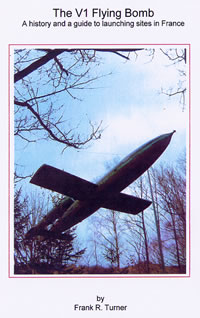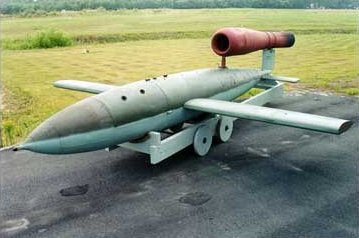 December 24, 1942 - The first surface-to-surface guided missile, later known as the V-1 Flying Bomb, was launched by German rocket engineer Wernher von Braun. Known as Buzz Bombs, they were used by Nazi Germany against England beginning in September 1944.
December 24, 1942 - The first surface-to-surface guided missile, later known as the V-1 Flying Bomb, was launched by German rocket engineer Wernher von Braun. Known as Buzz Bombs, they were used by Nazi Germany against England beginning in September 1944. In June, 1942, Germany began working on a new secret weapon. It was officially known as the F2G-76 but was also called Vergeltung (Retribution) as it was built in response to the mass bombing of urban areas in Germany.
British intelligence first became aware of this new weapon when on 22nd August, 1942, a Danish naval officer discovered an early test version that had crash landed on a small island between Germany and Sweden. The officer sent a photograph and a detailed sketch of the bomb to Britain and preparations began to deal with this new weapon that had the potential to win the war for Germany.
Military intelligence eventually discovered that the V-1 missile was being built at Peenemünde and in May, 1943, Winston Churchill ordered Operation Crossbow, a plan to destroy V-1 production and launch sites. Over the next few months over 36,000 tons of bombs were dropped on these targets.
The V-1 (also known as a flying bomb, buzz bomb or doodlebug) was a pilotless monoplane that was powered by a pulse-jet motor and carried a one ton warhead. They were launched from a fixed ramp and travelled at about 350mph and 4,000ft and had a range of 150 miles (240km). It was 8 metres (25 feet) long and had a wingspan of about 5.5 metres (20 feet).
Germany launched its new weapon from Pas-de-Calais on the northern coast of France, on 12th June, 1944. The first ten failed to reach the country but on the following day one landed in Essex. Over the next few months 1,435 hit south-east England. These attacks created panic in Britain and between mid June and the end of July, around one and a half million people left London.
Germany fired 9,521 V-I bombs on southern England. Of these 4,621 were destroyed by anti-aircraft fire or by RAF fighters such as the new turbojet fighter, the Gloster Meteor. An estimated 6,184 people were killed by these flying bombs. By August only 20 per cent of these bombs were reaching England.

1 comment:
Hi Arthur, it might amuse you to know that at Chartwell in Kent UK which was Winston Churchill's retreat there is a chess set with pieces made from a downed Doodlebug.
Post a Comment